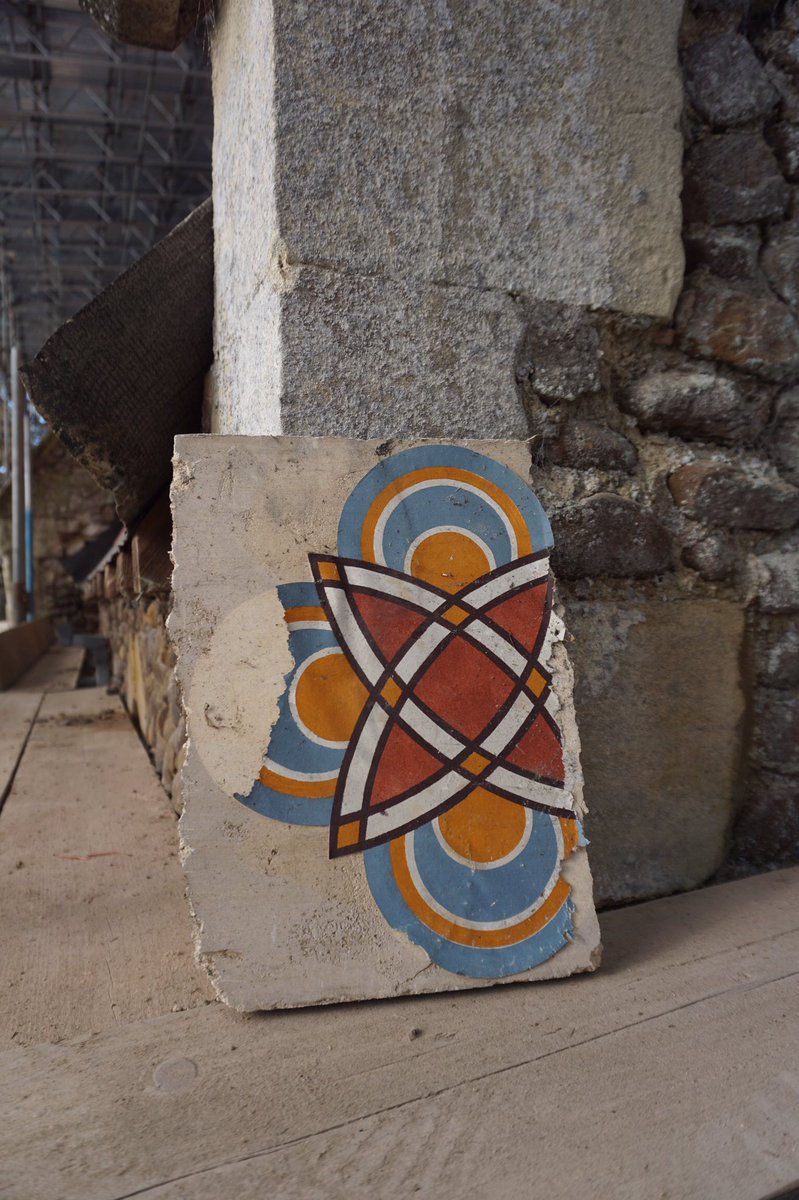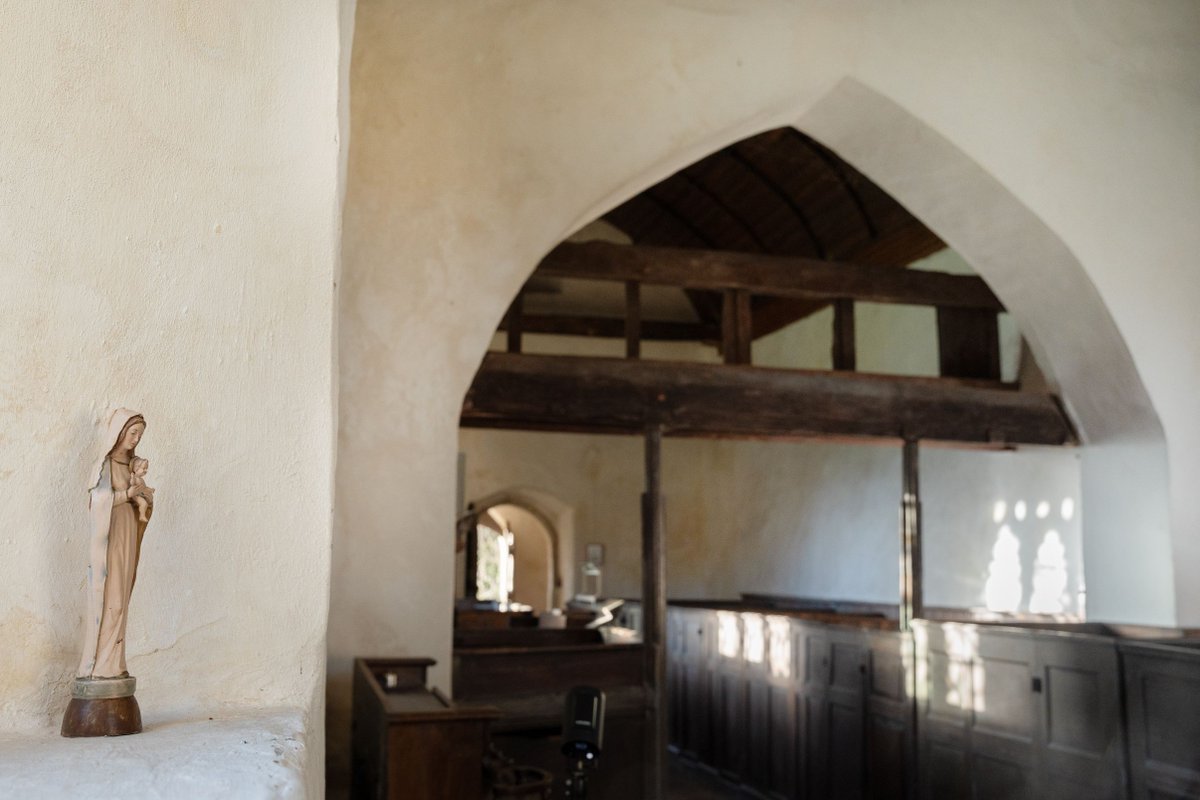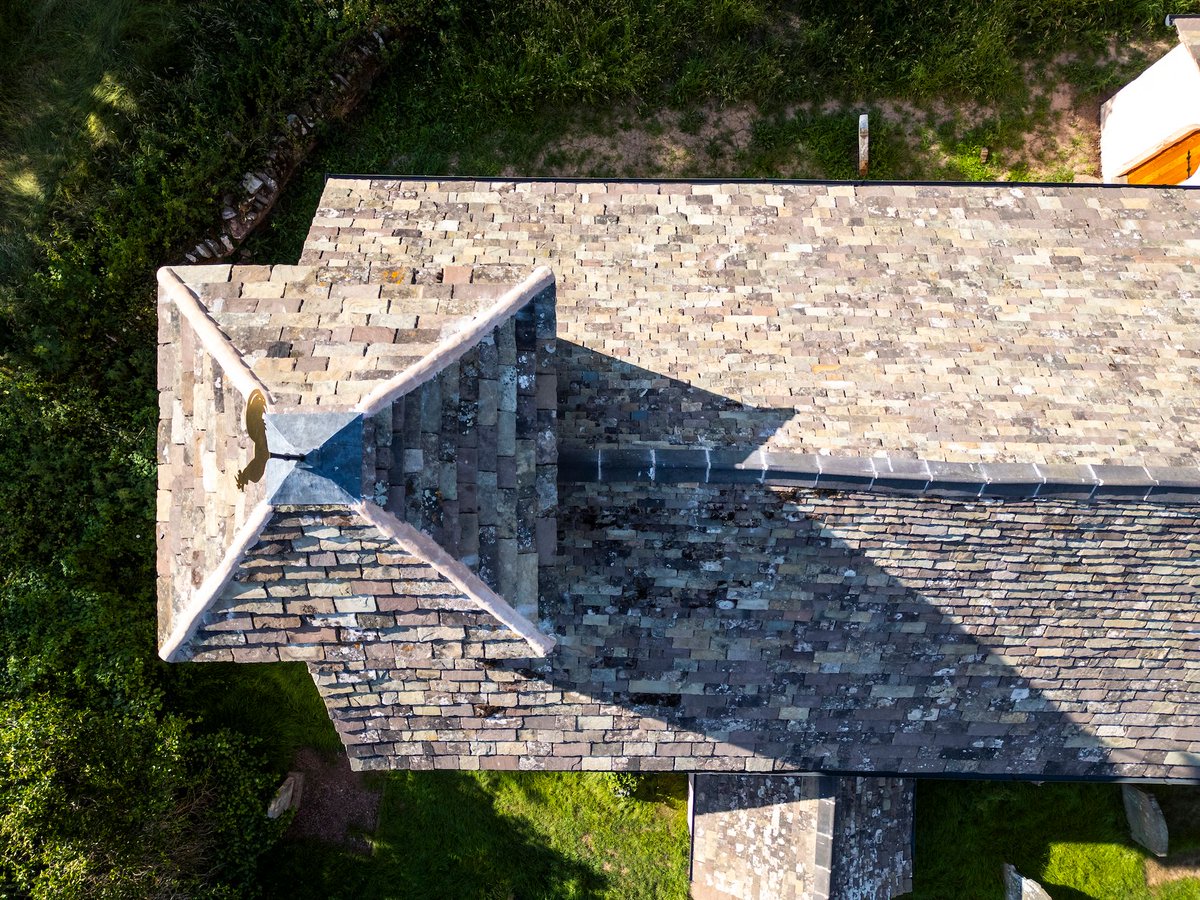St Giles’s, Tadlow is a medieval church that had a restoration by The Ecclesiologists’ poster-boy William Butterfield in the 1870s. And this week, in the roof void, we found a painted paper and plaster panel with Butterfield’s original scheme for the chancel ceiling.
#thread
#thread

We had no reason to doubt that the stencilled timber ceiling wasn’t part of the Victorian restoration. It’s pretty and suits the space. However, during re-roofing, our contractor (Brown & Ralph) noted that there was a failed lath and plaster ceiling over the timber ceiling.
2/
2/

They were clearing out the debris, which was adding weigh to the timber, when out came this panel! It’s a pattern painted on to paper and glued to the plaster. … cheaper than stencilling, I suppose.
3/
3/

We thought this was a lone survivor, until we got our noses right up into the cornice, and could see remains of identical panels along the wall-plate.
HOW COOL!
4/
HOW COOL!
4/

And now, knowing this geometric scheme of blue, orange, black, white and red once filled the chancel ceiling, other details have become to have more relevance – like the half-moon shape on the cornice moulding and the coloured stones in the reredos.
5/

5/


It may not seem like much but it’s so thrilling to find relics of earlier schemes, and also exciting to find things other than dust, nesting debris and feeding detritus from birds in old roof spaces.
6/
6/

St Giles’s is the latest church to come under our wing. It’s undergoing mega repairs, but will look great when it emerges in the summer…
7/7
📸: @badger_beard
7/7
📸: @badger_beard

• • •
Missing some Tweet in this thread? You can try to
force a refresh






















